Minute Maid Park, the home of the 2017 World Series Champion Houston Astros, anchors this section of downtown Houston. The state-of-the-art, retractable roof stadium is housed in a former train station and sits amid several modern loft and office buildings, as well as a smorgasbord of great restaurants like Irma’s, one of Houston’s Tex-Mex staples.
The Civic Center District has been the hub of Houston city government since 1939. It’s home to City Hall, Hermann Square Park, and the historic Central Library, which underwent an extensive renovation in 2008. Hermann Square is frequently used for concerts, festivals, and other events. For a dose of Houston history, visit the Texas room at the Julia Ideson library.
Houston’s 1.8 million-square-foot George R. Brown Convention Center—the GRB, as it’s known by locals—hosts hundreds of thousands of visitors annually. A hefty makeover in 2016 brought restaurants, a 1,000-room Marriott Marquis hotel, and a grand pedestrian promenade connecting the GRB with Discovery Green Park. Dubbed Avenida Houston, the area is alive with activity including live music and special events. Rockets games at Toyota Center, shopping at Houston Pavilions, and easy access to the METRORail make the Convention District desirable to locals and visitors alike.
Centuries-old architecture and tree-lined streets with shops, cafes, pubs, and lofts provide a unique mix of old and new. Market Square Park, the site of Houston’s original city hall, and the University of Houston’s downtown campus keep this area bustling day and night.
The southern quadrant of downtown Houston is home to St. Joseph Medical Center and the Sacred Heart CoCathedral campus, which serves as an ecclesiastical and civic center.
Houston has long been known as a shopping oasis, and GreenStreet and The Shops at Houston Center’s wide array of retail, dining, and entertainment options, including Houston’s House of Blues, don’t disappoint. The area is easily accessible via the Main Street Square stop on the METRORail.
The hub of downtown Houston’s workforce, 10 of Houston’s 26 Fortune 500 companies call the Skyline District home. An extensive network of climate-controlled underground tunnels connects the vast skyscrapers. The JP Morgan Chase Tower is one of the tallest buildings west of the Mississippi, standing 75 stories tall.
Have a penchant for the performing arts? You’ll feel right at home in the Theater District. Houston is one of few U.S. cities with permanent resident companies in opera, ballet, music, and theater. The 17-block area includes nine world-class performing arts venues, as well as Bayou Place and the Houston Aquarium.
The Warehouse District is famous for its funky alternative art scene. Artists, architects, and photographers call this area home, where you’ll find hip dining options, live music, art studios, lofts, and more.
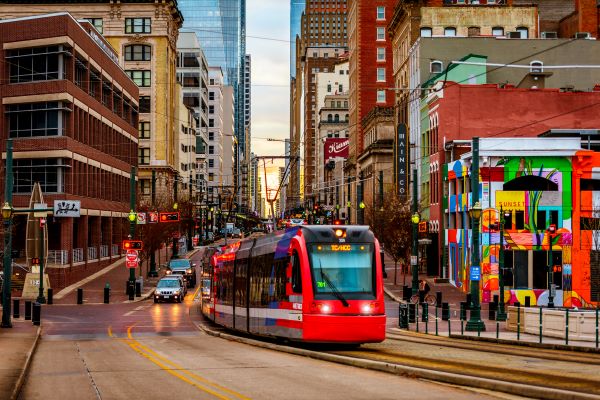
Encompassed by the cities of Houston and West University Place, Bellaire is known for its quiet, tree-lined streets
and highly ranked schools. Evelyn’s Park and its all-day café, Betsy’s, is a neighborhood hot spot, while Bellaire-Zindler Park
features a pool and tennis courts as well as Bellaire Recreation Center and the Bellaire Civic Center. Nearby Meyerland is the
center of Houston’s Jewish community. Visit website.
The Braeburn area features tree-lined streets dotted with mid-century modern homes. The community sits along Brays Bayou, offering easy access to more than 15 miles of hike-and-bike trails, The Galleria, the Texas Medical Center, NRG Stadium, U.S. 59, the 610 Loop, and Beltway 8. Westbury, Willow Meadows-Willowbend, and Southwest Houston lie in close proximity to Braeburn and the Brays Oaks district.
East Downtown — known as EaDo — is budding with a diverse and evolving mix of nightlife and art galleries. The area’s walkability is part of the appeal; a day may include a jaunt to the Houston Dynamo stadium and 8th Wonder Brewery, or Agricole Hospitality’s buzzy restaurants. A new METRORail line has improved connectivity.
Northeast of Downtown, explore the Fifth Ward’s rich musical, artistic and cultural history — including six churches that are more than 100 years old, such as the Mount Vernon United Methodist Church, founded by former slave Rev. Toby Gregg in 1865.
This area exudes urban sophistication and cosmopolitan energy. Centrally located in the city’s Uptown district, The Galleria is comprised of hundreds of upscale restaurants and retailers, as well as soaring office towers that see more than 200,000 working professionals and visitors daily. Uptown is also home to many of the city’s largest hotels and boasts an array of housing options. Visit website.
Together known as “GOOF,” these neighborhoods are increasingly popular among young families, a trend reflected in the rapid addition of new shopping centers and restaurants in the area. With grand magnolias and large lots, the Garden Oaks community is an architecturally unique area with traditional-style plantation homes and quaint cottages. Oak Forest is also charming, and slightly more affordable.
The Heights is Houston’s oldest planned community, located northwest of downtown. The area is known for its diverse population and small-town quality of life while still being in the heart of the city. Tastefully updated turn-of-the-century homes stand next to newly constructed Victorian– and Charleston–style cottages with large, wrap-around porches. Numerous high-rise condos are currently being developed in response to the population growth that’s predicted for the area. House hunters are drawn to the 19th Street Historic Business District, which offers a unique variety of specialty boutiques, antique shops, and funky eateries. The First Saturday Arts Market features live music, crafts, art, and more.
Houston has long been known for its burgeoning energy and aerospace industries, but it’s also home to the world’s largest concentration of researchers, physicians, and medical professionals. In addition to world-class medical facilities, the Texas Medical Center—which treats more than 10 million patients annually and employs more than 106,000 professionals—is comprised of educational icons like the University of Texas M.D. Anderson Cancer Center, St. Luke’s Episcopal Hospital, Memorial Hermann Hospital, and the Baylor College of Medicine. Nearby NRG Stadium hosts a myriad of events throughout the year, including Houston Texans football games and the Houston Livestock Show & Rodeo.
Memorial is a wealthy area located along Buffalo Bayou on the 610 Loop west of downtown. The area is home to Memorial Park, one of the largest urban parks in the United States. It’s popular for golf, running, and cycling, and reports nearly three million annual visitors. Popular attractions include the Houston Arboretum & Nature Center, Memorial City Mall, and Town & Country Village. A strip of popular restaurants, lounges, wine bars, and townhouses recently replaced a stretch of dilapidated properties. The Wave taxi-bus offers a fixed-route, fixed-rate shuttle within the Washington Avenue District, Midtown, and the Heights.
Sandwiched between downtown and the Museum District, the trendy Midtown neighborhood is a popular choice for young and middle-aged professionals. Midtown is one of the city’s most pedestrian-friendly neighborhoods—it’s packed with high-rise apartments, boutique shopping, art galleries, restaurants, and nightlife. Situated directly between downtown and the Texas Medical Center with three dedicated METRORail stations, location is a big attraction for prospective Midtown residents.
Established in 1911, Montrose is one of the most eclectic areas in all of Houston. It’s home to music venues, vintage shopping, and historic residential architecture. South Montrose is nestled near the Museum District, which encompasses more than 50 cultural institutions, museums, and art galleries. TripAdvisor named Montrose one of the hippest neighborhoods in America in 2018.
Culture runs deep in Houston’s Museum District, which welcomes nearly nine million visitors a year. The area is home to 18 museums within a 1.5-mile radius of the Mecom Fountain, including the Museum of Fine Arts, Rice University Art Gallery, the Houston Museum of Natural Science, the Houston Children’s Museum, and more.
River Oaks is well known as one of Houston’s oldest and most affluent neighborhoods. Located just three miles west of downtown in the Inner Loop, the area sports white-columned mansions dating from the 1920s, as well as Houston’s oldest country club. The community is protected by high architectural standards and comprehensive building restrictions. The median home value in River Oaks is over $1 million.
Central Southwest Houston is a predominantly African-American neighborhood that offers easy access to The Galleria and Texas Medical Center. Homes and apartments tend to be affordable. High-end shopping and fine dining has yet to move into the area, but it’s home to a large number of authentic ethnic restaurants.
The Third Ward, home to Texas Southern University and the University of Houston, is rich in culture and history, as evidenced in the beautifully revamped Emancipation Park. Residents enjoy easy access to Hobby Airport and Downtown.
Upper Kirby is a network of historic neighborhoods that are intermingling with redevelopment. The area is just minutes away from Greenway Plaza, downtown, The Galleria, and the Texas Medical Center, offering residents easy access to the places they live, work, and play. West Ave is home to an assortment of top-notch restaurants, art galleries, and trendy boutiques.
The third-most expensive neighborhood in Houston, the tree-lined West University area— West U, as locals call it—is a community of upper-middle class families. On every block you’ll find an abundance of upscale housing options, including unique bungalows and newly remodeled homes. Home to Rice University and Rice Village Shopping Center, the neighborhood appeals to families and young professionals alike. Morningside Boulevard offers a good mix of lunch, dinner, and happy hour spots.
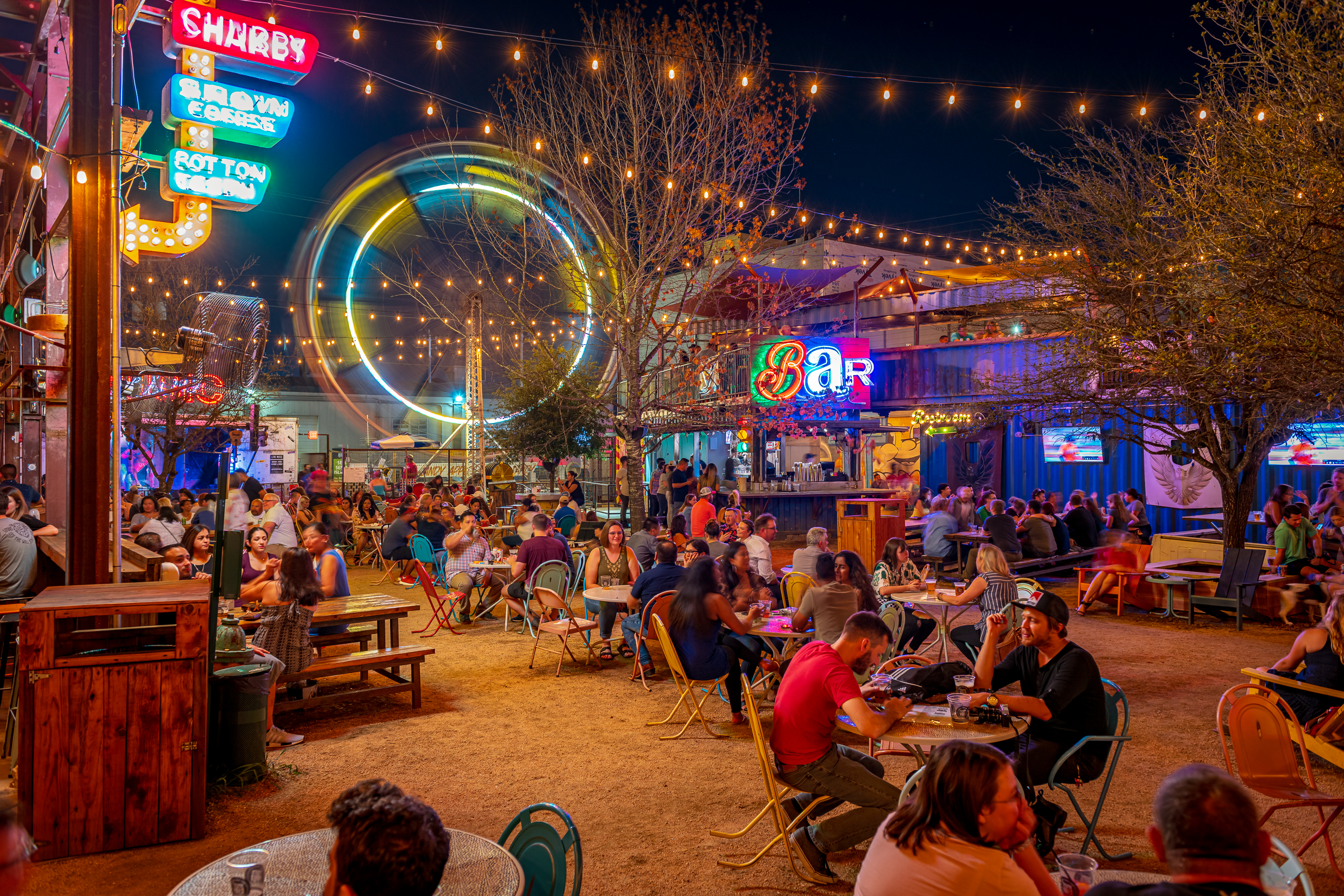
Northside/Acres Homes is a predominantly African-American community that got its name when World War I–era landowners sold home sites that were divided by the acre, not by the plot.
Aldine was built on the International-Great Northern Railroad. Located near George Bush Intercontinental Airport (IAH), the community is in central Harris County on the northern edge of Houston, off Farm-to-Market Road 525. Aldine’s location offers easy access to the Hardy Toll Road. Aldine ISD serves students in this area.
The Champions-F.M. 1960 area has stylish neighborhoods, many tucked away and hidden among tall pine trees. Easy access to downtown Houston, as well as an abundance of golf courses and country clubs, makes this area a popular choice. Spring ISD serves students in the area.
Conroe was named after a Southern Cavalry officer who founded a sawmill there in 1881. Today, towering pine trees and lakeside living make the city an attractive option for outdoors and golf enthusiasts who also desire reasonably quick access to downtown Houston. Housing options range from traditional neighborhood homes to luxurious lakefront condos. Montgomery County is a recognized academic leader in the Gulf Coast area, and Conroe ISD serves area students.
With 150 miles of pine forests and open grassland, Crosby and Huffman outline the east side of Lake Houston, about 35 minutes from downtown. State-of-the-art health care at the world-renowned Houston Medical Center is located nearby. Crosby ISD serves Crosby students and Huffman students attend Huffman ISD schools.
More than 120,000 residents call this large suburb home. It’s one of the most affluent ZIP codes in Harris county. The area has numerous golf courses and superior schools, and will soon be the trailhead of the planned Cypress Creek Greenway Project, which will feature hike-and-bike trails, horseback riding, canoeing, and more. Students are served by Cypress-Fairbanks ISD.
The Cypress Fairbanks region—Cy-Fair, as it’s known to locals—is approximately 20 miles from Houston’s downtown business district. This largely unincorporated region of Harris County gains a strong sense of community from an association with the top-rated Cypress Fairbanks ISD. The school district is a major attraction for new residents.
The North Houston District, a 12-square-mile activity center at Interstate 45 and North Sam Houston Parkway, is home to 20 million square feet of offi ce, retail, and industrial space, 72,000 employees, and approximately 112,000 residents. Two school districts serve the area: Aldine ISD and Spring ISD.
Located in northeast Harris County, Humble covers approximately 10 square miles. Humble is named after one of the area’s earliest settlers, Pleasant Smith “Plez” Humble. From his home, he opened and operated the city’s first post office, and reportedly also served as an attorney, served as justice of the peace, operated a fruit stand, and was a wood dealer. Petroleum has been the basis of Humble’s economy since its beginning. Humble ISD is nationally recognized by the Texas Education Agency for offering outstanding education, and is listed among the 25 fastest-growing school districts in Texas.
Jersey Village is a town of approximately 8,000 residents located about 20 miles northwest of downtown Houston. Residents have access to a golf course, a public swimming pool, and a public park with playground facilities. Residents in homes on the shores of Jersey Village’s small lake enjoy access to fishing there. Cypress-Fairbanks ISD serves area students.
Kingwood, known as the “livable forest,” is best known for 75 miles of greenbelt trails where residents can hike and bike throughout the woods along the lake and into a nature reserve. The city is divided into 25 neighborhoods called villages. Each has its own distinct style, price point, private pools, and other amenities. The Clubs of Kingwood offers six championship golf courses and more than 1,000 acres of fairways. Humble ISD serves Kingwood students.
Located in the northeast quadrant of the city, just 21 miles from downtown on U.S. 59, the Greater Lake Houston area includes the cities of Humble, Kingwood, and Spring, all of which are currently experiencing robust population and economic growth. The area is largely forested, and due to its natural beauty, the recreation of Lake Houston and the San Jacinto River, the proximity of IAH and the Port of Houston, and the quality of its many subdivisions, the area has proved to be a strong attraction to newcomers.
Located in North Harris County, Spring is located about 20 miles north of Houston just off Interstate 45. The area was originally inhabited by the Oroquiza Indians and later became a large farming community until it became an intersection for two railroad lines. Spring ISD serves area students.
In the 1930s, Humble Oil Company—now known as Exxon—and more than 20 other energy companies worked the fi elds around Tomball, producing large amounts of oil and natural gas. Since, Tomball has grown into a diverse and vibrant community near the big city while retaining its small-town history and sensibility. Much of Tomball’s charm comes from its award-winning festivals, shopping, eateries, and live music. Located approximately 28 miles northwest of Houston, the community is home to a smorgasbord of museums, historic homes and cemeteries, award-winning golf courses, craft breweries and wineries, hike-and-bike trails, parks, and more. Tomball ISD serves students here. Visit website.
Nestled in 28,000 acres of native forest, The Woodlands has been one of the best-selling master planned communities in Texas since 1990. Located 27 miles north of downtown Houston on Interstate 45, The Woodlands encompasses nine residential villages, commercial centers, a resort and conference center, a luxury hotel and convention center, hospitals, and health care facilities. You’ll find exceptional shopping along Market Street and at The Woodlands Mall, dining along The Woodlands Waterway, and recreational amenities and entertainment, including the Cynthia Woods Mitchell Pavilion. The Woodlands is home to nearly 1,900 businesses and corporations. One of The Woodlands’ newer developments in is Hughes Landing, a 200-acre development on Lake Woodlands that features 11 office buildings; shopping, dining and entertainment; a specialty grocer; an upscale hotel; a fitness center; and 800 multi-family residences. The Woodlands is a project of the Woodlands Development Company, a wholly owned subsidiary of The Howard Hughes Corporation. Visit website.
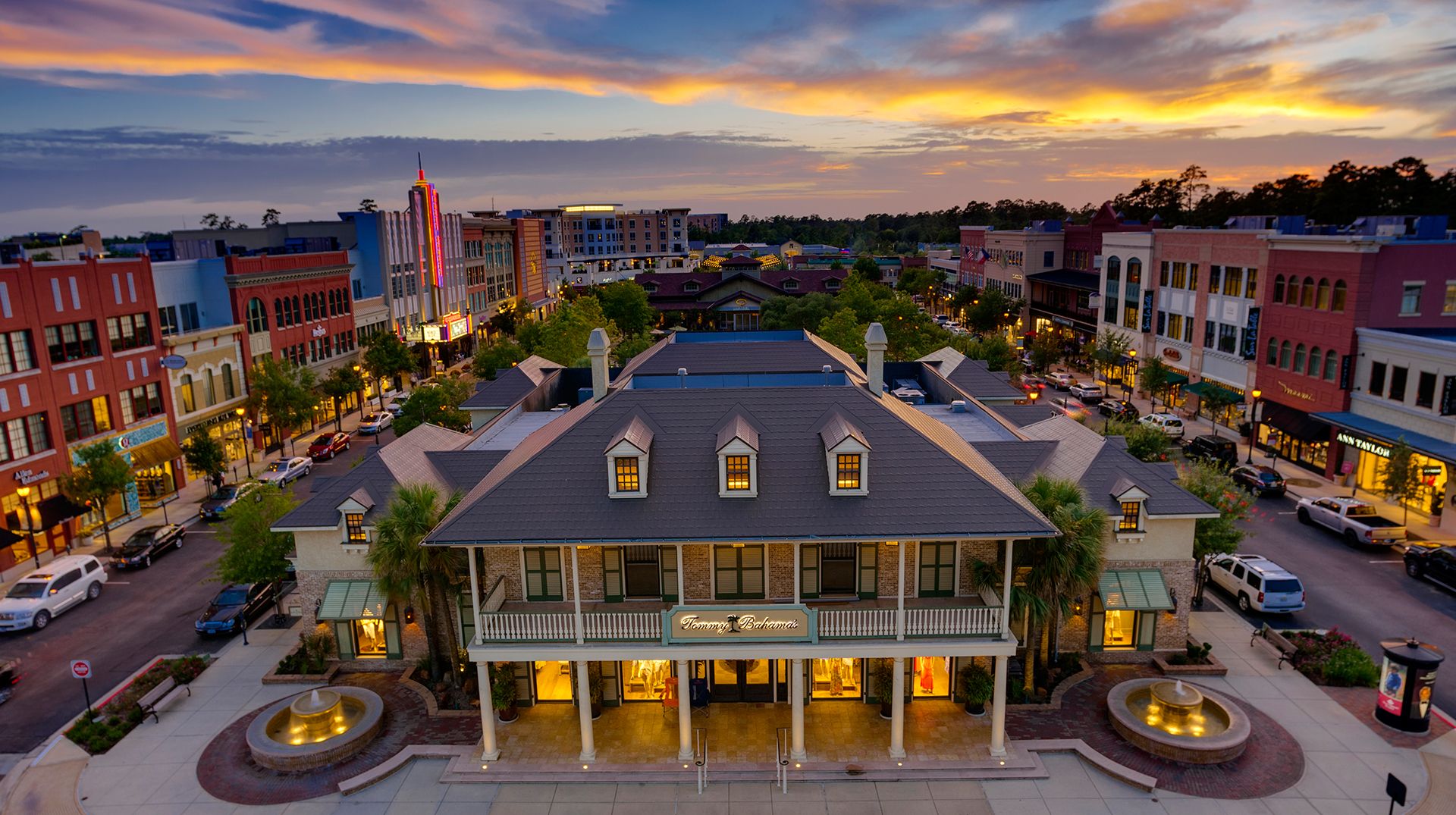
Alvin—the hometown of baseball legend Nolan Ryan—is a community proud of its history and committed to preserving its heritage. The community embraces its past through historic structures, like the Alvin Depot, original neighborhoods, and a traditional downtown area. Alvin delivers value in transportation via two state highways, the BNSF and UP rail lines, and two airports. Alvin Community College and Alvin ISD provide value in education, too—Alvin ISD boasts an exemplary rating from the Texas Education Agency. The second-largest school district in Brazoria County covers 250 square miles and serves Alvin, Manvel, Iowa Colony, Liverpool, Amsterdam, and parts of Rosharon, Arcola, and Pearland. Visit website.
Missouri City’s location minutes from downtown, The Galleria, the Texas Medical Center, both major airports, and the Port of Houston keeps residents close to Houston and all it has to offer. The city council has adopted a strategic plan that focuses on continuing inclusive, beautiful, and safe community growth. Fort Bend ISD and Houston ISD serve students here. Visit website.
Pearland was recently named one of the fastest-growing cities in the Houston region and the fifth-safest city in Texas. A 20-minute drive to downtown Houston allows residents to enjoy short commutes and all the big city has to offer while taking advantage of the area’s lower-than-average cost of living. The 1.1-million-square-foot Pearland Town Center features more than 140 shops. Students attend schools in Pearland ISD and Alvin ISD. Visit website.
Richmond is located about 15 miles southwest of downtown Houston on the Brazos River. Anticipating a growing population, the city’s Richmond Trail Master Plan will create trails for recreation and commuting. Students attend Lamar Consolidated ISD, an award-winning district. Visit website.
Rosenberg was founded in the late 1800s, when the Gulf, Colorado, and Santa Fe railroads chose the area as a railway stop. Today, the city offers unique leisure activities, family friendly festivals and events, and a growing list of recreational activities that contribute to the area’s friendly, laid-back quality of life. Rosenberg is located 35 miles southwest of Houston in Fort Bend County. Lamar Consolidated ISD (lcisd.org) serves students here. Visit website
Sugar Land, located approximately 20 miles southwest of downtown Houston, is both one of the fastest-growing cities in Texas and one of the most economically strong suburbs of Houston. Master-planned communities featuring golf courses, country clubs, and lakes contribute to home values. The community offers exceptional schools, libraries, and civic organizations, and residents enjoy dining, shopping, and nightlife at Sugar Land Town Square. Sugar Land won the title of “Fittest City in Texas” four times in the state-run Texas Round-Up fi tness initiative. Sugar Land students attend schools in Fort Bend ISD. Visit website.
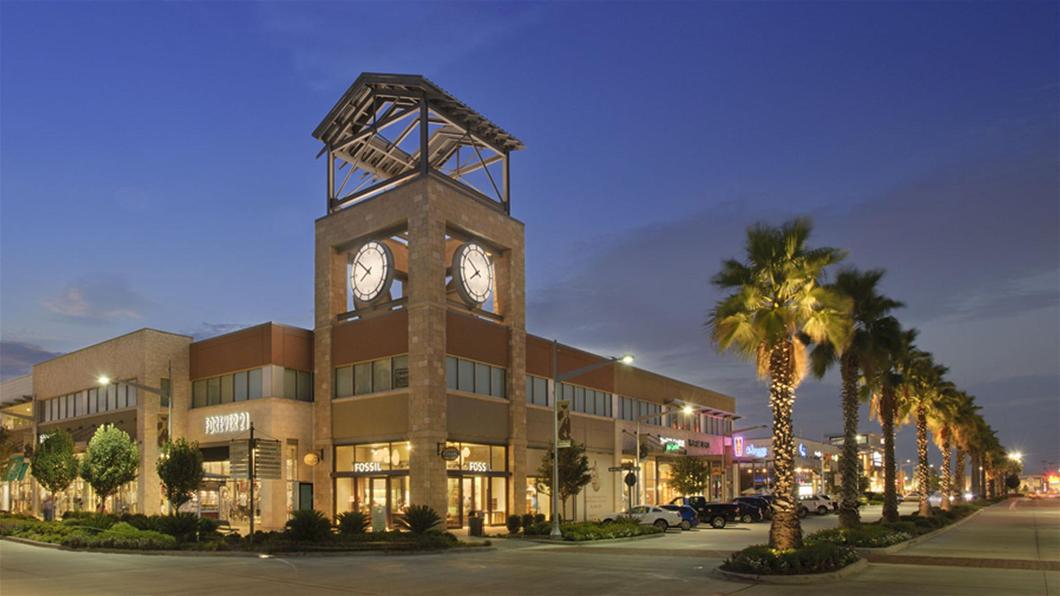
Baytown lies 30 miles east of downtown Houston on the northern shore of Galveston Bay between the San Jacinto River to the west, the Trinity River to the east, and seated along both Interstate 10 and State Highway 146. Residents enjoy family fun at Pirate’s Bay, and wildlife and birding enthusiasts fl ock to the Baytown Nature Center and Eddy Gray Wetlands Education & Recreation Center. The area’s major employers include ExxonMobil Baytown Refinery, Exxon Chemical, Chevron Phillips, Bayer, and Amoco. The city is also home to major regional warehouse and distribution centers for Home Depot and Walmart. Goose Creek ISD serves Baytown students. Visit website.
Known primarily as the home of NASA’s Johnson Space Center, the Clear Lake area has grown into a robust and dynamic region. Nine distinct communities distinguish the area, which provides easy travel to Houston and Galveston. Residents enjoy an abundance of activities including shopping, dining, and boating on Clear Lake, a 2,000-acre inlet of Galveston Bay. Students attend Clear Creek ISD (ccisd.net). Visit website.
Deer Park is often referred to as the Birthplace of Texas. Here lies the site where initial treaty documents securing Texas’ independence from Mexico were drafted following the Battle of San Jacinto in 1836. In 2010, Business Week named Deer Park Texas’ Best Affordable Suburb, and CNN named Deer Park among the 100 Best Places to Live. Deer Park provides easy access to the Houston region, the Clear Lake/Bay Area, and the sand and surf of Galveston Island. Students attend Deer Park ISD. Visit website.
Friendswood is conveniently located about 30 miles from downtown, between central Houston and Galveston. It offers easy access to Hobby Airport, Bush Airport, Ellington Field, and Clover Field. Friendswood has been named one of the country’s Best, Most Affordable Suburbs by Business Week. Depending on location, students are served by Friendswood ISD or Clear Creek ISD. Visit website.
Galena Park is located on the north bank of the Houston Ship Channel just east of the Houston city limits. With a population of 10,592, the city is home to an Olympic-size swimming pool, two recreational facilities, a public library, and numerous parks.
Galveston is a historic beach town just 50 miles southeast of Houston on the Gulf of Mexico. The island is the most-visited beach destination in Texas, with 32 miles of shoreline, one of the country’s largest collections of Victorian architecture, and the fourth-busiest cruise port in the nation. The island offers a variety of attractions, such as the historic Pleasure Pier, home to 16 rides, games, retail shops, and eateries, as well as Moody Gardens, Schlitterbahn Waterpark, historical sites, museums, and restaurants along the beachfront and within the historic downtown district. Students on Galveston Island and the neighboring Bolivar Peninsula attend Galveston ISD. Galveston is also home to the University of Texas Medical Branch, which is the island’s number-one economic driver. Visit website.
Kemah is located on Galveston Bay, about 25 minutes south of Houston and 25 minutes north of Galveston. Commercial fishing has remained a large part of Kemah’s identity over the years, making it a long-standing destination for recreation and tourism. The Kemah Boardwalk offers an array of waterfront restaurants, shopping, attractions, and events throughout the year. Kemah is served by Clear Creek ISD (ccisd.net). Visit website.
La Marque—also known as the Gateway to the Gulf—is an incorporated residential community about 12 miles northwest of Galveston. La Marque ISD serves most of La Marque, however Dickinson ISD, Hitchcock ISD (hitchcockisd.org), and Santa Fe ISD (sfi sd.org) serve small portions of the area. Visit website.
La Porte means “the door” or “gateway” in reference to what is now the Houston Ship Channel. Founded in 1889 by French settlers, La Porte prides itself on small town atmosphere, strong industry and economy, and numerous parks and recreational activities. Sylvan Beach Park offers 2,000 feet of sandy beaches, as well as a fi shing pier and a boat launch. City parks include a wave pool and a park alongside Galveston Bay. La Porte ISD serves students in the area. Visit website.
League City has experienced tremendous growth through the years, and recently surpassed Galveston as Galveston County’s largest city. Approximately 23 miles equidistant between Houston and Galveston, League City boasts the third-largest pleasure boat anchorage in the United States, with four marinas that host more than 7,000 boats. The city has been designated as one of the 100 Best Small Cities in America by Money magazine, has more than 620 acres of public parks, three golf courses, and the Jonny Arolfo Civic Center. Depending on location, students are served by Clear Creek ISD or Dickinson ISD. Visit website.
Nassau Bay is a small suburban community whose history is deeply rooted in the space program. Nassau Bay sits directly across from the Johnson Space Center and is surrounded on three sides by water. With two marinas, three hotels, and several popular retail and entertainment establishments, the city receives nearly 3,000 visitors every day. Students attend schools within Clear Creek ISD. Visit website.
Despite its small size, Webster is mighty in terms of commercial vibrancy. The city is home to more than 2,200 businesses that have come to be known as the retail, dining, and entertainment capital of Bay Area Houston. Since NASA built the Johnson Space Center, Webster has served as home to several aerospace companies, and both the aerospace and medical fi elds continue to be two of the city’s major growth industries. Webster’s location, key industry sectors, super-regional market, and business-friendly credo contribute to the city’s commercial vibrancy. Clear Creek ISD serves students in Webster. Visit website.
Pasadena is located southeast of Houston and is home to the country’s largest petrochemical complex. The city provides easy access to recreational activities, Hobby Airport, the Houston Ship Channel and Port Houston. Global energy giants like BP and Total operate in Pasadena, in addition to more than 5,700 small businesses. Pasadena ISD serves students in Pasadena. Visit website.
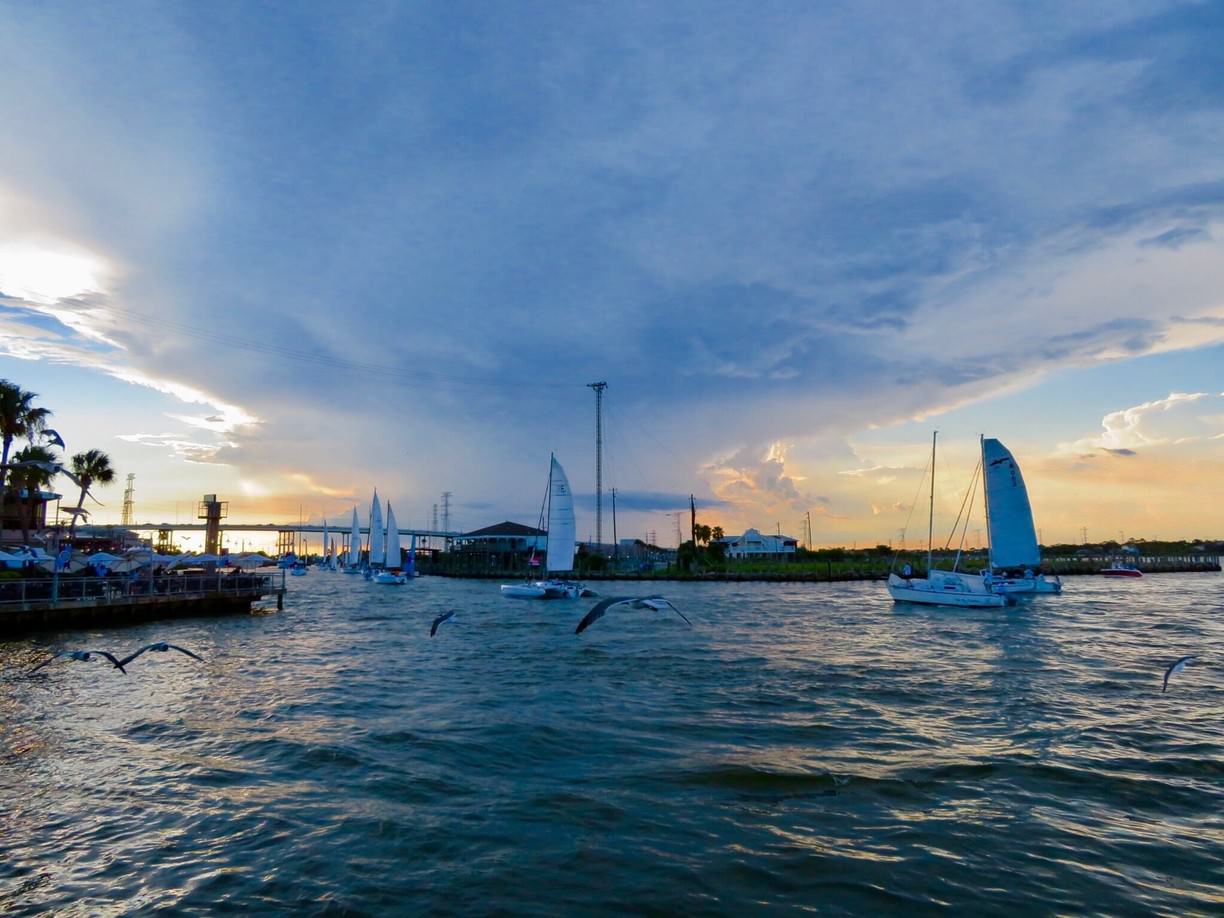
Alief is located in western Harris County along the Southern Pacifi c Railroad and Brays Bayou. Alief ISD is the most ethnically diverse school district of its size in all of Texas and its 45,000 enrolled students speak more than 60 languages. The district offers a wide range of opportunities in academics, the arts, and career and technology education.
Houston is home to the largest Asian population in the southern United States. The city’s original Chinatown, located just east of Downtown, relocated in the early 1990s to the southwest area of the city. Today, Chinese shopping centers like Hong Kong City Mall, restaurants, bakeries and more sit alongside markets dedicated to Indian, Pakistani and Middle Eastern wares. The area, also known as Asiatown, is complete with street signs featuring Chinese characters.
Fulshear is home to dynamic new developments for those who like the feel of country living with easy access to big-city amenities like major shopping, dining, and entertainment venues. Primarily a farm and ranch community, the city offers a beautiful landscape, ranging from rolling terrain dotted with centuries-old hardwoods, grassy prairies, and serene lowlands along the banks of the Brazos River. Lamar Consolidated ISD serves students in the area. Visit website.
Located at the intersection of Harris, Fort Bend, and Waller counties, Katy offers the appeal of small-town suburbia and close distance to Houston-area businesses and recreation. Housing options range from apartments and condos to complete living communities with waterfront and golf-course properties. Katy ISD is nationally recognized for its educational programs. Visit website.
The Westchase District offers a unique suburban lifestyle coupled with the excitement and energy of living in the city. Housing options range from apartments and townhomes to single-family homes and multi-million dollar mansions. The district’s proximity to The Galleria and Memorial City Mall, as well as nearby grocery stores and banks, allows residents to find all the necessities close to home. Two country clubs offer world-class golf, and well-maintained hike-and-bike trails lead to Storey Park and Hershey Park. Houston ISD and Alief ISD serve the Westchase District. Visit website.
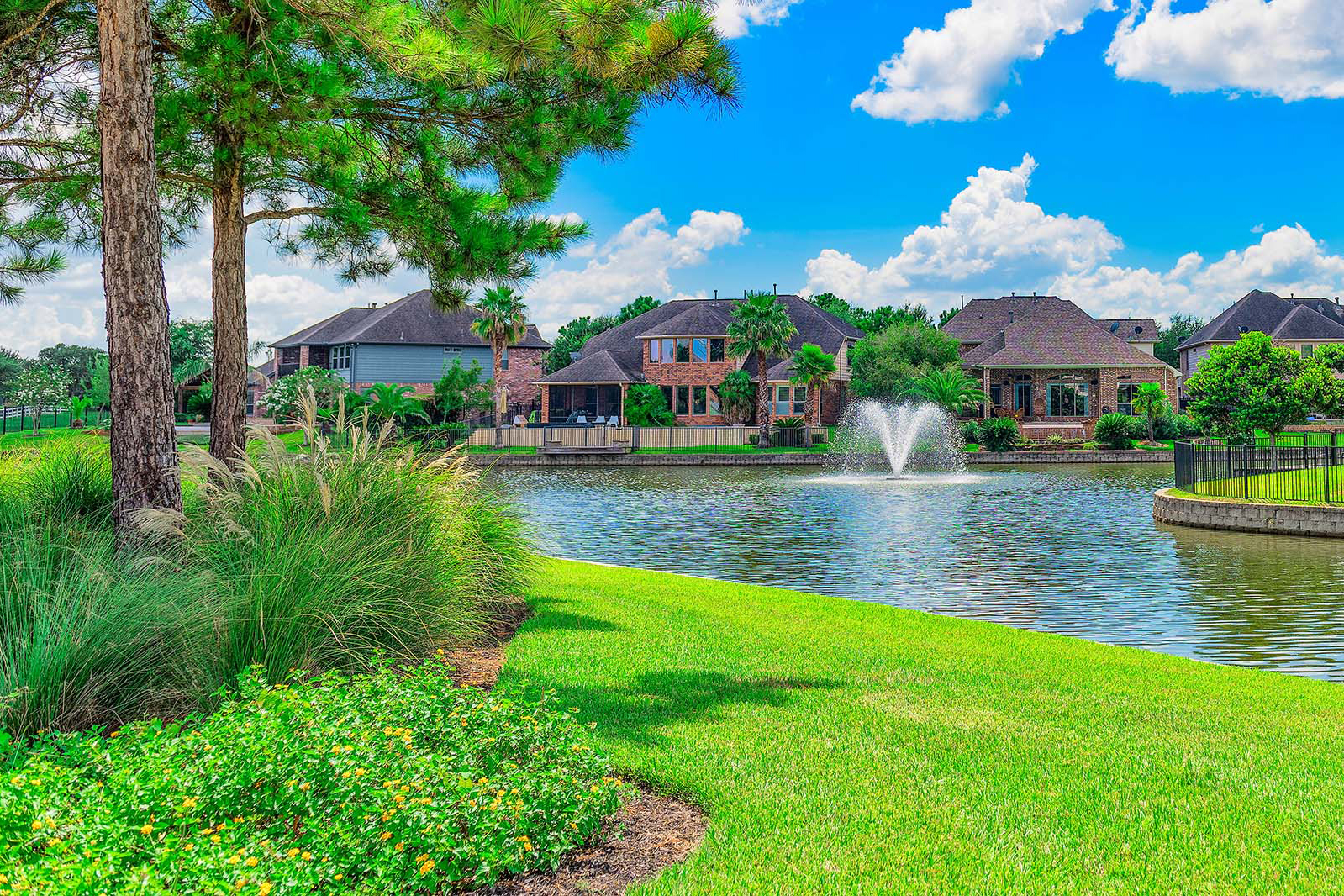
With four major league sports teams, an abundance of bike and jogging trails and some of largest urban parks in the nation, Houston is a great place to experience the outdoors.
Houston is one of only a handful of cities in the country with resident companies in all of the major performing arts disciplines including opera, drama, musical theater, symphony and ballet. There are also 19 different arts and cultural institutions that make up the walkable Museum District.
Of all the things that make living in Houston so enjoyable, high on the list are the city and county parks along with state and federal recreation spots.
Want to learn more? Download a copy of the Relocation Guide for more information on Houston!